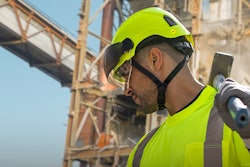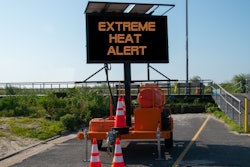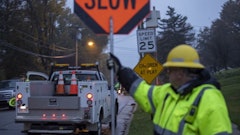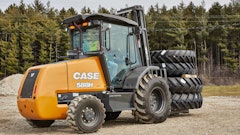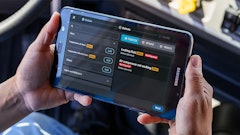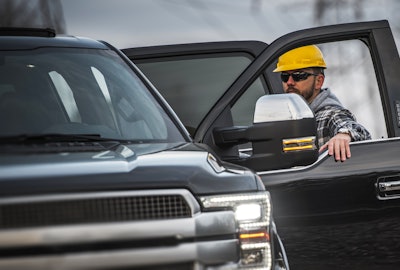
Driving to and from jobsites is a standard job function for contractors and their teams. This routine travel comes with significant risks. In fact, there are more than 5 million crashes and 35,000 fatalities on U.S. roadways each year, according to the National Highway Traffic Safety Administration.
In addition to the negative impact accidents can have on team morale and productivity, these events can be financially disastrous for construction businesses. Collision claims in 2023 were one of the most frequent insurance claims for contractors, costing just under $10,000 on average. Comparatively, bodily injury claims associated with roadway accidents involving contractors in 2023 cost $95,000 per occurrence, making them one of the most expensive auto claims policyowners encountered.
The emotional and financial impact of these incidents can be devastating. Fortunately, there are several tactics and strategies that can help contractors optimize driver safety, reduce accident risks and safeguard their bottom lines.
How Contractors Can Mitigate Auto Risks
Contractors’ auto risks are different than those encountered by professionals working in other industries. Contractors go where the work is, often with tools, materials and cargo in tow. That’s why it’s critical for contractors to ensure they’re doing all they can to optimize driver safety and effectively protect their businesses’ bottom lines. Focusing on the following areas can help to mitigate accident risks and enhance training opportunities for employed drivers:
 There always are two sides to a collision story, but cameras can provide irreputable evidence.@Kadmy - adobe.stock.com
There always are two sides to a collision story, but cameras can provide irreputable evidence.@Kadmy - adobe.stock.com
- Cameras. There always are two sides to a collision story, but cameras can provide irreputable evidence. Forward-facing cameras can show how the actions of other drivers influenced a crash, and cab-facing cameras reveal the actions and behaviors of construction employees behind the wheel. Pairing cab-facing cameras with artificial intelligence (AI) also can help determine when drivers are distracted, sleepy or looking at anything other than the road and other motorists. Integrating this technology can be an adjustment for business owners and employees, but doing so can optimize driver accountability and provide transparency for claims processing when accidents occur.
- Telematics. Telematics serve multiple purposes. In addition to monitoring a vehicle’s location and speed, telematics can track everything from idling and hard-stopping behaviors to forceful cornering and other performance-related data. When a driver is going through brakes, tires and fuel faster than others, telematics data inform training opportunities structured to optimize fleet management and reduce future maintenance costs.
- Fleet Safety Program. Establishing a safe driving policy and detailing fleet management requirements are critical steps for contractors who want to enhance driver compliance, loss prevention and risk management. In addition to using telematics and cameras to address driver behavior, primary pillars of successful fleet safety programs include:
- Checking drivers’ motor vehicle records annually to ensure they’re consistently practicing safe driving habits
- Requiring drivers to regularly participate in training that details safe driving skills and vehicle operation, including defensive driving techniques and other best practices that can reduce collision risks
- Cargo and Trailer Securement. Unsecured cargo or trailers can become dangerous projectiles when an accident occurs. Because improperly secured loads and trailers can result in everything from death and injuries to load losses, citations, and cargo or vehicle damage, contractors should ensure anyone who is driving for the business knows how to perform pretrip inspections, determine vehicle and trailer load capacities, and confirm that loads and trailers are safely secured.
- Hired and Non-owned Auto Coverage. Contractors who allow employees to use personal vehicles for company business put their companies at risk for non-owned auto liability. In addition to understanding how their vehicles and drivers are covered, contractors should train anyone driving for business purposes on standards and expectations for safe driving compliance and what to do when an accident occurs.
 Establishing a safe driving policy and detailing fleet management requirements are critical steps for contractors who want to enhance driver compliance, loss prevention and risk management.@Tomasz Zajda - adobe.stock.com
Establishing a safe driving policy and detailing fleet management requirements are critical steps for contractors who want to enhance driver compliance, loss prevention and risk management.@Tomasz Zajda - adobe.stock.com
Why Commercial Auto Insurance Is Essential
Because automotive accidents are unexpected mishaps that can lead to debilitating consequences for construction businesses, commercial auto insurance provides considerable value to contractors. Having the right coverage can successfully protect their businesses from the financial fallouts that often follow in the wake of roadway collisions.
Commercial auto policies are generally broken into two separate coverage categories: Liability coverage protects assets and future income by covering damage to other vehicles, property or people caused by insured vehicles; and the physical damage section of commercial auto policies pay for damage incurred by covered vehicles, regardless of who is at fault. Physical damage coverage is broken down further into two subcategories:
- Collision coverage applies to insured vehicles and equipment damaged by an overturn or collision with another object.
- Comprehensive coverage is structured to cover vehicle and equipment damage caused by non-collision events, such as fire, vandalism or hail.
It’s good to remember that not all states require drivers to purchase auto insurance. That’s why contractors also should consider the benefits of uninsured and underinsured motorist coverage.
What Is Uninsured Motorist Coverage?
Uninsured motorist coverage is generally split into two parts:
- Uninsured Motorist Bodily Injury (UMBI). UMBI coverage will pay for medical bills, lost wages, pain and suffering, or funeral expenses for affected drivers and their passengers in the event an accident is caused by a driver: who doesn’t have liability car insurance; whose insurance company denies coverage or goes out of business; or who causes a hit-and-run accident.
- Uninsured Motorist Property Damage (UMPD). Similar to UMBI, UMPD coverage pays to repair or replace vehicles and property damaged by a driver who does not have insurance.
Unlike UMBI or UMPD, underinsured motorist coverage will pay for damage caused by an at-fault driver whose limits are too low to cover the amount owed to others. Underinsured motorist coverage will cover the remaining amount owed to a commercial auto policyowner within its policy limit, after the at-fault driver’s insurance carrier pays its total limit.
Making Sense of It All
Understanding which scenarios are covered by different commercial auto policies may seem daunting, but it doesn’t have to be. By simply connecting with an independent insurance agent, contractors can successfully determine which coverages their businesses need. Additionally, independent insurance agents can often help contractors package commercial auto policies with other insurance to help them save money and simplify the claims filing process.
The roads may be a dangerous place at times, but with the right training, resources and insurance coverage, today’s contractors can help ensure their businesses — and employees — remain one step ahead of accidents on the road.


